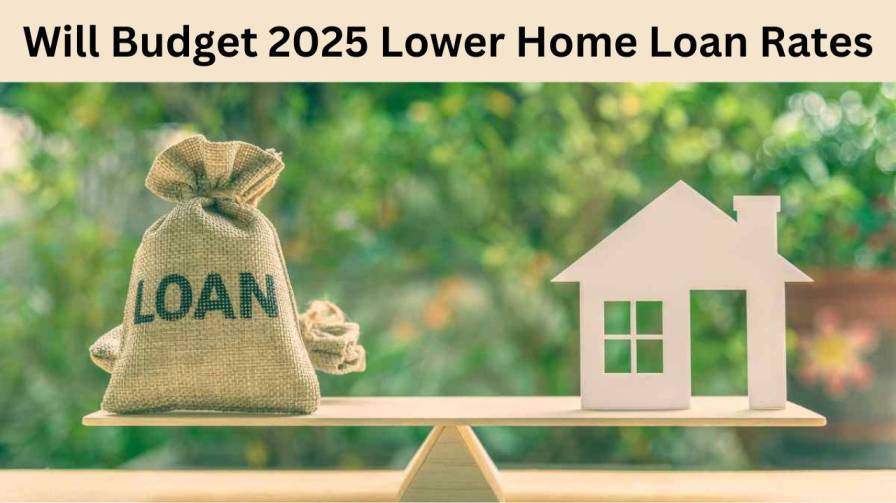As the Union Budget 2025 approaches, millions of home loan borrowers in India are holding their breath, hoping for measures that could alleviate the burden of rising property prices and fluctuating interest rates. For many, the next Budget announcement could be the difference between continuing to feel financially stretched or gaining some much-needed relief. Home buyers, especially those struggling with high loan interest rates, are keenly awaiting what Finance Minister Nirmala Sitharaman will announce on February 5, 2025, to make home ownership more affordable.
Affordable housing has long been a key pillar of the government’s development agenda. With the increasing demand for homes, the sector’s growth continues to remain critical to India’s overall economic development. The real estate sector also plays an important role in job creation, and home loan accessibility remains essential for economic growth. Amid these considerations, experts are hoping for various measures that would directly or indirectly affect the cost of home loans, thereby making property ownership easier for many Indians.
In the lead-up to the 2025 Budget, a growing consensus among financial experts, property developers, and economists is that the Budget must introduce a balanced approach to address affordability in the housing sector. Tax deductions, subsidies, and interest rate reductions could significantly ease the financial burden on homebuyers. But will these hopes materialize?
Expert Opinions: What to Expect in Budget 2025?
As we look forward to the Union Budget 2025, experts are calling for a comprehensive approach that addresses the root causes of housing unaffordability. From tax deductions to GST reduction, there are several ways the government can directly impact the housing market and, by extension, home loan borrowers. Below are some of the key expectations.
1. Tax Deductions: A Much-Needed Relief
Tax relief for home loan borrowers remains one of the most anticipated measures in Budget 2025. The Section 24(b) tax deduction limit has been capped at ₹2 lakh for a long time, but there is a growing demand to increase this amount. Experts believe that raising this deduction to ₹3 lakh would offer significant relief to homebuyers, especially those in the middle-income brackets who are struggling to manage their monthly loan repayments.
“There is a real need to raise the tax deduction limit for home loan borrowers. A potential increase from ₹2 lakh to ₹3 lakh would make a meaningful difference, especially for middle-class families who are grappling with high interest rates,” said Aditya Jhaveri, founder and CEO of Blox, an end-to-end digital home-buying platform. He further added that this simple change could help reduce the overall financial strain on home loan borrowers.
In addition to tax deductions, experts also hope for a boost in subsidies under the Pradhan Mantri Awas Yojana (PMAY), the government’s flagship affordable housing initiative. This would allow more families to access housing and get tax benefits, making homeownership more attainable for those in the lower-income groups.
2. Reintroducing the Credit Linked Subsidy Scheme (CLSS)
One of the most eagerly awaited measures is the possible reintroduction of the Credit Linked Subsidy Scheme (CLSS) under PMAY. This scheme, which was available to first-time homebuyers in the past, provided interest subsidies on home loans, making it easier for lower-income households to afford homes. The revival of this program, experts say, could be a game-changer for homebuyers looking to break into the housing market.
Many stakeholders believe that updating the income criteria and loan limits within the CLSS framework could further enhance housing affordability. For example, expanding the eligibility limits for the middle-income groups could help a larger segment of the population take advantage of the scheme.
Gaurav Mittal, founder of Golden Abodes, a property development company, expressed his optimism, saying, “Reviving the Credit Linked Subsidy Scheme will make homeownership much more accessible for first-time buyers, especially those in the lower-income categories. This is a crucial step to boost demand and stimulate the housing sector.”
3. GST Reduction: Easing the Burden on Under-Construction Properties
An important consideration for prospective homeowners is the Goods and Services Tax (GST) on property transactions. Currently, 18% GST is levied on under-construction properties, which many experts believe significantly adds to the cost of purchasing a home.
A reduction in GST for affordable housing, coupled with reduced taxes on under-construction properties, could help make homes more affordable for buyers. Some experts believe that the reduction of GST could significantly lower the total cost of a home purchase, thereby encouraging more people to invest in property.
“I believe the government will consider reducing GST rates on under-construction properties in Budget 2025. This would directly impact the affordability of homes, as construction costs would decrease, making it easier for developers to lower their prices,” said Pranit Arora, founder and CEO of Univest, a fintech platform focused on market research.
4. Interest Rate Cuts: A Tough but Crucial Decision
While the Reserve Bank of India (RBI) has already adjusted interest rates several times over the past year, experts are not expecting a direct reduction in home loan interest rates from the Budget itself. According to Pramod Kathuria, founder and CEO of Easiloan, a financial technology platform, while the RBI is likely to maintain a cautious stance on rate cuts, the overall measures announced in the Budget could positively affect interest rates.
“It’s possible that the Budget 2025 will not directly reduce home loan interest rates, but the indirect impact of measures to stabilize the economy, boost the housing sector, and create more demand could influence lenders to lower rates in the coming months,” said Kathuria.
The Impact of Budget 2025 on Home Loan Borrowers
In a year where interest rates remain high, the burden of home loan repayments continues to strain many families across the country. Given the rising cost of living, coupled with increasing property prices, Budget 2025 could be a pivotal moment in making homeownership a reality for millions of Indians.
Several key financial measures could play a significant role in reducing the financial strain on borrowers:
| Measure | Expected Impact | Details |
| Tax Deductions | Financial relief for home loan borrowers | Increase Section 24(b) deduction to ₹3 lakh |
| Reviving CLSS | Affordable housing for first-time buyers | Interest subsidies for lower-income groups |
| GST Reduction | Lower property prices for under-construction homes | Reduced GST on affordable housing |
| Subsidies under PMAY | More accessible housing for lower-income families | Expanded coverage under Pradhan Mantri Awas Yojana |
| Interest Rate Adjustments | Indirect reduction in home loan costs | Impact of economic measures could lead to lower rates |
Conclusion
As the 2025 Union Budget draws nearer, the expectations surrounding home loan affordability remain high. While reducing home loan interest rates may not be the immediate solution, tax relief, subsidies, and GST reductions can work together to significantly ease the burden on borrowers. Finance Minister Nirmala Sitharaman has the opportunity to provide a balanced and comprehensive approach that not only alleviates the current pressures on home loan borrowers but also stimulates growth in the real estate sector.
If Budget 2025 strikes the right balance between economic growth, fiscal responsibility, and affordable housing solutions, it could lay the groundwork for a future where homeownership is more accessible and sustainable for Indians from all walks of life.
With experts and stakeholders eagerly waiting for the announcement, all eyes are on February 5, 2025, as the government charts its course for a more affordable and inclusive housing landscape.





